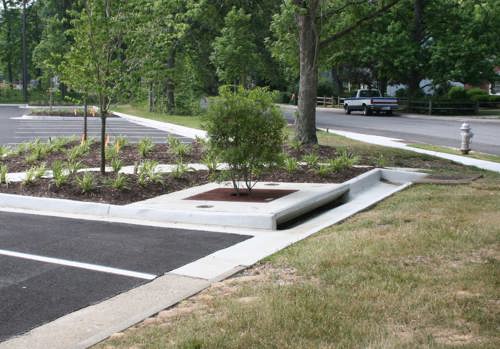
What is High Rate Biofiltration?
High rate biofiltration continues to gain acceptance within the regulatory and engineering community as an acceptable alternative to traditional bioretention. These systems provide high treatment levels in a compact size making bioretention feasible on sites where traditional bioretention is not possible. They have earned numerous agency approvals for meeting water quality standards for post-construction BMPs. In addition, they benefit from being smaller in size, which saves valuable land space and reduces long-term maintenance costs compared to traditional bioretention. But what exactly is high-rate biofiltration?
Bioretention has been the principal form of Low Impact Development (LID) used to slow, treat, retain, and infiltrate stormwater runoff, mimicking a site’s natural, pre-development hydrology. Both traditional bioretention and high rate biofiltration are pollution control mechanisms that incorporate physical, chemical and biological (living) processes via vegetation to capture, immobilize and treat harmful pollutants from stormwater runoff. Other terms that describe this process include rain gardens, vegetated filters, bioswales, biofilters and tree box filters.
High rate biofiltration differs from traditional bioretention in that it has been optimized for high volume/flow treatment and high pollutant removal. Traditional bioretention footprints with typical design flow rates of 1-12 inches per hour can occupy up to 10% of the contributing impervious drainage area. In addition, the individual components of traditional bioretention (mulch, soil, underdrain and plants) are designed by the engineer and sourced and installed by the contractor.

In contrast, high rate biofiltration systems contain an engineered high flow biofiltration media with flow rates up to 175” per hour (depending on the jurisdiction). In addition, these systems are often packaged and delivered with all the components necessary for system performance – mulch, media, vegetation, and underdrain.
It should be noted that not all systems marketed as high rate biofiltration include vegetation. “Bio” implies that living organisms are a component of the treatment processes that work in conjunction with other pollutant removal mechanisms. Without plants as a critical component of the synergistic community of living organisms in these systems, biofilters may not be as effective over the long term and may not meet the low impact development requirements of local jurisdictions. Therefore, it is crucial to verify that the high rate biofiltration system you are considering for your site includes vegetation.
